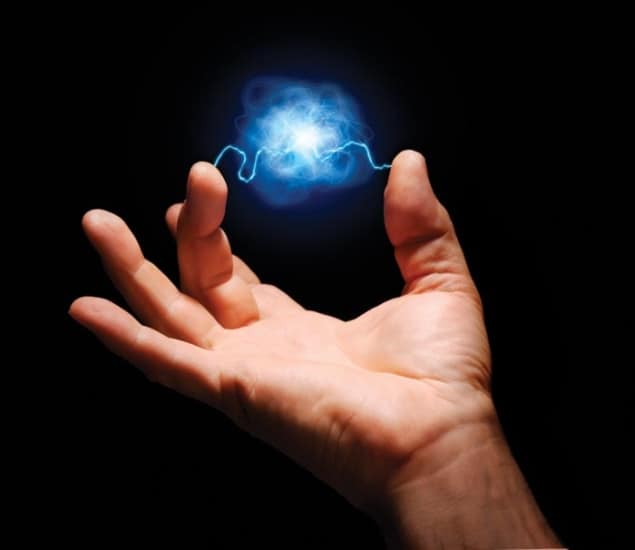Richard Clayton reviews The Spark of Life: Electricity in the Human Body by Frances Ashcroft

The image of God extending his hand towards a newly created Adam forms the centrepiece of the Sistine Chapel ceiling. It is a familiar image, and probably one that comes to mind for many people when they hear the phrase “the spark of life”. Yet Michelangelo’s fresco predates the serious study of electricity, so there is no animating spark passing between the famous outstretched fingers. In the 400 years since the artwork was completed, our view of electricity has changed dramatically, and from our current vantage point we know that it is vital (literally!) to the functioning of every living system on the planet. It is not, however, some mysterious and unknown life force. Rather, it is open to careful and quantitative study, and the aim of The Spark of Life is to take us on an exciting tour of the roles that bio-electricity plays in the human body.
The book’s author, Frances Ashcroft, is a University of Oxford physiologist who is well known for her work on ion channels – the remarkable molecules that regulate the flow of ions (in other words, electric current) across otherwise impermeable cell membranes. As gatekeepers to the cell’s interior, ion channels mediate the “spark of life”, and the story of their structure, their function and the consequences of their malfunction is the unifying theme of her book.
The opening chapter provides a short history of the generation and storage of electric charge, and how in the 18th century various new and exciting electrical “toys” were used to induce the contraction of frogs’ legs and give the illusion of re-animating corpses. Subsequent chapters move on to describe ion channels and the role they play in our nervous system, muscles, heart, sense organs and even our consciousness. Along the way there are diversions describing how certain species of fish use their electric organs to generate high voltages, and the ways that electricity has been used both to heal and to harm the human body.
This book is aimed at a general readership, and is written in a lively, accessible and engaging style, with plenty of anecdotes to entertain the reader while also conveying the science. Much of the complexity of living systems arises from interactions across length and time scales that range from microns and microseconds to metres and lifetimes, and Ashcroft does not shrink from dealing with this intricacy. Rather than reducing all bio-electric phenomena to the activities of ion channels, she instead uses ion channels as the jumping-off point to explain them.
There are significant differences between electricity in a living system and in conventional electric circuits
One example is her discussion of diabetes, a disease which, like many that affect the whole person, results from the abnormal behaviour of ion channels. Diabetes is the focus of Ashcroft’s scientific interest, and she vividly relates her excitement at the discovery of a molecular-scale explanation for it: in some people who – thanks to a genetic mutation – are born with diabetes, an ion-channel malfunction prevents the release of the hormone insulin (required to regulate the level of glucose in the bloodstream) from cells in the pancreas. The integrative link across spatial scales from molecule to patient is explored further with a detailed discussion of the active mechanisms of certain drugs used to treat patients born with diabetes. On the flip side, various types of lethal poison also act by interfering with ion-channel operation, and the book is enlivened by thoughtful and occasionally gruesome anecdotes.
Another strength of the book lies in its clear and inspiring accounts of the scientific process. One that stands out is the story of the sustained effort made by the Nobel-prize-winning University of Cambridge physiologists Alan Hodgkin and Andrew Huxley in figuring out the mechanism by which impulses travel along nerve fibres. Despite the sheer difficulty of their experiments, the interruption of the Second World War and competition from across the Atlantic, the eventual outcome was not only a mechanistic explanation of the nerve impulse, but also a mathematical model that articulated it.
Physicists will find much of interest in this material. Living systems, of course, operate according to physical laws, and so in principle are amenable to systematic and quantitative description. In nerve and muscle cells, the potential difference across the cell membrane varies by around 100 mV. Given that a cell membrane is about 10 nm thick, the electric field in which the ion channel operates is enormous; it is hardly surprising that the changes in molecular structure that cause ion channel pores to open and close are regulated by membrane voltage. In the heart, cells are connected so that electrical impulses are rapidly conducted from one cell to its neighbours, enabling electricity to initiate and synchronize contraction. In the brain, these connections are, of course, much more intricate.
There are, however, some traps for unwary physicist readers. Early on, Ashcroft makes an important point when she notes that there are significant differences between electricity in a living system and in conventional electric circuits. For example, in the human body it is ions rather than electrons that carry electrical current, and these ions move in solution and across membranes rather than through wires and other components. This is of more than trivial importance, because the conductance of a membrane may depend not only on the ion channel’s conductance, but also on both the ability of ion channels to distinguish between ionic species and the concentration of ions inside and outside the cell. For many interdisciplinary scientists, the complexity and intricacy of living things is precisely what makes them so appealing, and this book is a good way in for those wishing to dip a toe in the water.
This is a popular-science book, so its coverage is broad rather than deep. The Spark of Life does not tell the whole story of electricity in the human body; there are, for example, no equations. However, it does provide a superb and entertaining introduction to this area from the perspective of a physiologist, and makes valuable background reading for the increasing number of physicists who are developing an interest in the physics of life.
- 2012 Allen Lane/W W Norton £20.00/$28.95hb 352pp


